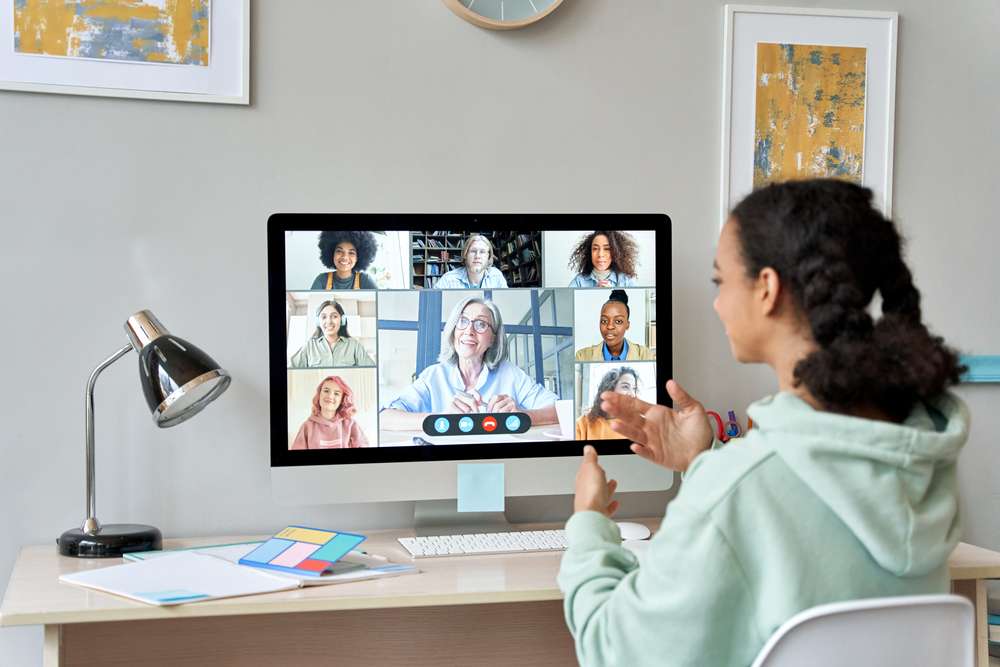
Introduction: Understanding User-Generated Content and Social Learning
The emergence of digital technologies and the internet has ushered in a new form of content creation and dissemination known as User-Generated Content (UGC). UGC entails any form of content, such as videos, blogs, discussion posts, podcasts, and social media updates, that have been posted by users of an online platform. This ensemble of user-made content has dramatically reshaped the traditional apple-cart of content creation and distribution, opening up a platform of expression for everyone with a digital device and internet connectivity.
UGC comes with numerous advantages, principally in education and learning. The democratic nature of UGC fosters diverse perspectives, encourages creativity, enhances user engagement, and promotes critical thinking. It brings about a shift from the conventional top-down approach to learning towards a more collegiate, inclusive and community-driven outlook. This is where the idea of ‘Social Learning’ gels well with UGC.
Social Learning, as proposed by Albert Bandura, is a theory that posits learning occurs in a social context with a dynamic and reciprocal interaction of the person, environment, and behavior. It initiates not only through the direct experience of the learner but significantly through the observational learning from others’ experiences. The digital age bolsters the ease and viability of social learning through features like social networking sites, online communities, and other digital platforms that allow for communication, interaction, and the sharing of information.
Combining the concepts of UGC and social learning, we see a powerful and transformative model of learning, where anyone can learn anything from anywhere. Users create and upload content based on their knowledge and experiences, making their insights available to a global audience. Other users consume this content, gaining new knowledge, perspectives, and insights, thus also being inspired to create their own content—advancing a continually evolving cycle of learning and growth.
This chapter introduced the fundamental underpinning of this article. The following chapters will delve deeper into the role of UGC in social learning, its impacts, strategies to promote social learning, review some successful real-world examples, and finally look at future trends. All with the aim of providing a comprehensive understanding of promoting social learning through user-generated content.

The Role of User-Generated Content in Social Learning
User-generated content (UGC) has profoundly changed the model of content creation and consumption, opening the way for social learning to thrive. Social learning is a process through which individuals learn from each other by observing, imitating, or modeling behaviors. The principle behind it is the concept that people learn from one another, irrespective of time or location, particularly in social media settings. Here, UGC becomes pivotal.
UGC can comprise various content forms, including videos, blogs, podcasts, reviews, and social media posts. Typically, they are created voluntarily by individuals or online communities. UGC has shown considerable potential in delivering learning experiences because it allows learners to witness the experiences of others. This shared first-hand information gives room for the spread of unique skills, knowledge, and ideas.
Traditionally, learning was based on hierarchical, teacher-led methods where information flowed from experts to learners. Today, however, learning has become more collaborative and learner-centered, largely due to UGC. Online platforms have fostered an environment where anyone can share their knowledge with everyone else, with information that may extend beyond traditional learning scopes.
UGC plays a critical role in social learning through the democratization of knowledge. It breaks down traditional barriers to education by allowing anyone to generate and share content. This means that irrespective of one’s location, economic status, or educational background, there is the potential to access and contribute to the pool of knowledge.
User-generated content encourages participatory culture, where individuals feel connected to their learning, thereby fostering engagement. When learners create UGC, they are usually more motivated as they engage with others in the learning process, contributing to the co-creation of knowledge. This produces a sense of ownership and responsibility towards their learning.
UGC also provides opportunities for authentic learning. Unlike traditional learning methods, UGC exposes learners to real-world problems and challenges, teaching them to find structured, innovative solutions. That’s because these materials are inherently reflective of the experiences, thoughts, and perspectives of real people.
Additionally, UGC enhances reflective learning. It facilitates the exchange of thoughts and ideas, allowing individuals to learn from others’ insights and perspectives. Through online forums, blogs, or social media platforms, learners can interact, share ideas, and give feedback, leading to the reflection of their own understanding and learning processes.
UGC fosters diversity in learning material. In a typical learning environment, information comes from a single, standardized source. However, UGC integrates a multitude of experiences and perspectives, thus leading to a more comprehensive understanding of a subject matter.
Finally, UGC opens doors for lifelong learning. The ease of access to various types of content on different topics grants people the possibility to learn independently. The learning process is no longer confined to a period or a specific place.
In conclusion, UGC provides a unique opportunity by demonstrating the collective intelligence of a group and maximizing the potential for learning. Although it has its challenges, such as reliability of information, there’s no denying that it has transformed how we view learning today. When fostered responsibly and effectively, UGC can serve as an indispensable tool in promoting social learning.

Impacts of User-Generated Content on Education and Learning
User-generated content (UGC) is transforming a multitude of sectors, including education and learning. Among the significant impacts, fostering collaboration, empowering learners, and enhancing knowledge retention stands as remarkable outcomes.
Firstly, UGC encourages collaboration among learners. Through the process of creating and sharing content, learners can work together and exchange ideas. This collaborative learning not only stimulates a sense of community but also promotes critical thinking, as learners evaluate, critique, and build upon their peers’ contributions. For instance, wikis — platforms that allow multiple users to contribute and edit — are increasingly used in educational settings for group projects and collaborative learning. Users can analyze real-time information, co-construct knowledge, and make collective decisions.
Secondly, UGC transforms learners from passive recipients of information to active creators. In this context, students are not just consuming knowledge but also producing it, thereby gaining a deeper understanding of the subject. By creating their original content — which could range from blog posts and podcasts to videos and digital stories — learners demonstrate their mastery of the material and develop critical 21st-century skills, such as creativity, communication, and digital literacy.
Additionally, UGC enhances personalization and inclusivity in learning. Since learners create content based on their understanding, it caters to diverse learning styles and paces. It also elevates the voices of those who may feel marginalized in traditional learning settings, promoting inclusivity. For example, introverted students may find it easier to express their thoughts and questions online than in a crowded classroom.
UGC also promotes continuous learning beyond the formal education setting. Due to the extensive reach and accessibility of online platforms, learners anywhere in the world can access UGC, broadening their horizons and continuing their learning journeys. For instance, MOOCs (Massive Open Online Courses) rely heavily on UGC, such as forums and peer reviews, to engage and educate a diverse and geographically dispersed cohort of learners.
Finally, UGC enhances knowledge retention and understanding. The process of creating content requires a deeper engagement with the material, translating complex concepts into their own words, diagrams, or other forms of content. This not only reinforces understanding but also makes it easier for them to recall the information later.
However, while UGC brings numerous benefits, it also brings challenges that educators and learners must overcome. These include ensuring the accuracy and reliability of the content, addressing digital divide issues, and providing supports to develop digital literacy skills.
Nonetheless, it is clear that user-generated content has significant potential to enhance education and learning in a myriad of ways. By ensuring that these challenges are confronted and that learners are supported in creating and engaging with UGC, its full potential can be unlocked.

Strategies to Promote Social Learning through User-Generated Content
Promoting social learning through user-generated content requires a strategic approach that blends both the tools and techniques of digital collaboration and the attitude its users bring with them. Let’s dive into some key strategies to stimulate social learning effectively:
1. Encourage Participation: Encouraging users to generate content is the first step to promoting social learning. They should feel comfortable and motivated to share their knowledge and ideas. Create a friendly and collaborative environment where everyone’s input is valued. Reward and recognition systems, competitions, and challenges can be used to foster engagement and contribution.
2. Use Easy-to-Use Content Creation Tools: Not everyone is tech-savvy, so the tools and platforms used for creating and sharing content should be user-friendly. Make sure users can easily create, edit, share, and interact with content without requiring advanced technical skills. There are several content creation tools available today that are intuitive and easy-to-use, enabling even beginners to create high-quality content.
3. Implement Collaborative Platforms: By utilising collaborative platforms for content generation and sharing, you can cultivate a learning community where users can learn from each other’s experiences and perspectives. Features like comment sections, discussions boards, video conferencing, and chat tools enable real-time interaction and collaboration.
4. Incorporate Variety of Content Formats: Not everyone has the same learning style. By incorporating various types of content – text-based, videos, infographics, podcasts, quizzes – you accommodate diverse learning preferences, making learning more engaging and effective.
5. Provide Constructive Feedback: Feedback is crucial for learning, but it should be given constructively. It should not just be about pointing out what’s wrong, but also guiding how improvements can be made. Encourage users to give feedback on each other’s content, so they learn from their peers’ perspectives, enhancing their understanding and skills.
6. Remember Accessibility: Ensuring the generated content is accessible to all users is paramount, whether they are visually impaired, hard of hearing, or have other limitations. Proper use of meta-tags for images, accurate captions for videos, and descriptive titles and headings are just some ways of making content more inclusive.
7. Moderate and Curate Content: While it’s essential to encourage freedom of expression, there also needs to be a system for moderating and curating the content shared. This ensures that the content is valuable, constructive, and aligns with the learning objectives. Well-curated content also makes it easier for users to find what they need and learn.
8. Incorporate Real-life Scenarios: Encourage users to create content around real-life scenarios or provide solutions to real-world problems. This can make learning experiences more practical and applicable.
By combining these strategies, you can cultivate an environment where users take charge of their learning experiences, thereby promoting social learning effectively through their created content. These strategies will not only make users active participants in their learning but also foster a sense of community, making learning more engaging, interactive, and collaborative.

Case Studies: Successful Examples of Social Learning driven by User-Generated Content
When it comes to demonstrating the effectiveness of promoting social learning through user-generated content, several perfect examples come to mind.
The first case study is Wikipedia, the world’s largest crowd-sourced online repository of knowledge and information. In a traditional learning environment, encyclopedias or textbooks would be the go-to sources for quick information. However, nowadays, Wikipedia serves that purpose by providing speedy access to a broad range of topics, all curated and updated by users. Not just as a reference tool, Wikipedia has also become a platform for collaborative learning and knowledge sharing. Users who contribute to articles learn research, writing, and fact-checking skills. More complex articles would require collaborators to engage in discussions, learn from others, and come to a consensus, enforcing social learning principles.
Another exemplary case is Duolingo, a popular language learning app. This application encourages users to create their lessons or contribute to editing existing ones. Through this, learners aren’t just absorbing knowledge passively; they actively create and shape the learning experience, not just for themselves but for others as well. Here, social learning is promoted as users are incentivized to learn from others’ contributions, work on their lessons, and gain the satisfaction of aiding global users in their language learning journeys.
The next case is Stack Exchange, a network of question-and-answer (Q&A) websites. Unlike traditional class-based learning, Stack Exchange abandons the conventional student and teacher roles in favor of a peer-to-peer model. Anyone can ask a question, anyone can answer, and the best responses are voted up and rise to the top. Therefore, it simultaneously offers a platform for individuals to gain knowledge and contribute to the learning of others.
Finally, there’s GitHub, an online community for developers. GitHub users can “fork” or copy others’ projects and use them as a starting point for their developments, promoting shared learning. Also, through the collaboration functionality, they can propose improvements to others’ projects, facilitating constructive feedback, and encouraging learning from each other’s code to improve their skills.
Through these case studies, we can see that user-generated content isn’t just about augmenting information. It’s a tool that fosters social learning, enabling users to learn from and with others in various contexts. By creating or modifying content, users gain a deeper understanding of the subject matter and play an instrumental role in the broader learning community.
Conclusion: The Future of Social Learning and User-Generated Content
As we approach the end of this in-depth exploration into the future of social learning through user-generated content, it is imperative to acknowledge the clear shifting landscape of learning methodologies. The potential of user-generated content in promoting social learning is immense and the possibilities are numerous, as technology continues to grow and evolve at a rapid pace.
The rise of digital platforms has revolutionized the way people share, consume and learn from content. Understanding this transition is crucial in tapping into user-generated content’s capabilities in educational settings. As we’ve discerned, not only has digital transformation unlocked pathways for collaborative learning experiences, but also rotated the power dynamics by allowing learners to become content creators.
There’s a multitude of benefits that social learning presents. It bridges gaps between geographically diverse learners, fosters critical thinking, encourages active rather than passive participation, and ultimately caters to the diverse learning styles of individuals. User-generated content additionally boosts this approach by adding a layer of authenticity, personalization and real-world context.
Whilst we are witnessing an ascension in this trend of using user-generated content in learning, it doesn’t come without its challenges. Concerns over credibility, quality assurance, and privacy implications of user-generated content are obstacles that need addressing. Nonetheless, the solutions are within our reach. For instance, implementing rigorous verification systems and promoting digital literacy can help tackle the issue of content reliability. Similarly, a strict adherence to cybersecurity norms can mitigate privacy concerns.
Looking ahead, with the advancement of new technologies like AI and AR, we can expect a further boost in the effectiveness and dynamic nature of user-generated content. Imagine a future where learners create their own augmented reality experiences to demonstrate their understanding, or AI algorithms curating personalized learning journeys based on user-generated data.
In conclusion, it is evident that the dynamic blend of social learning and user-generated content is playing a pivotal role in shaping the future of education. It’s sparking a paradigm shift from traditional top-down learning models to a more engaging, interactive, and learner-centric approach. As educators, learners, and stakeholders of this digital age, it’s upon us to harness this powerful confluence to facilitate richer, more effective and inclusive learning experiences. With a thoughtful and committed approach, we can ensure that the future of social learning combined with user-generated content is bright and promising.


